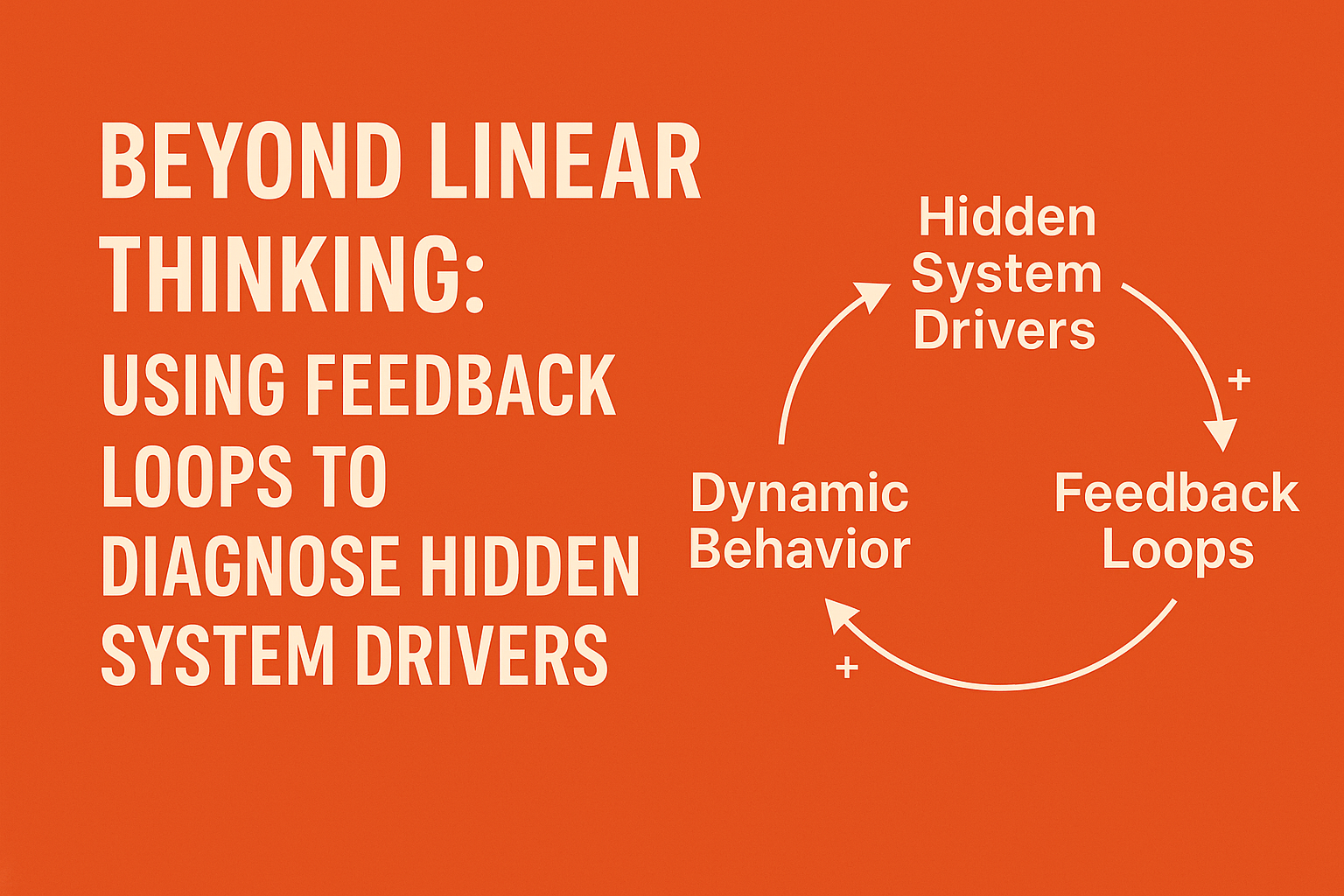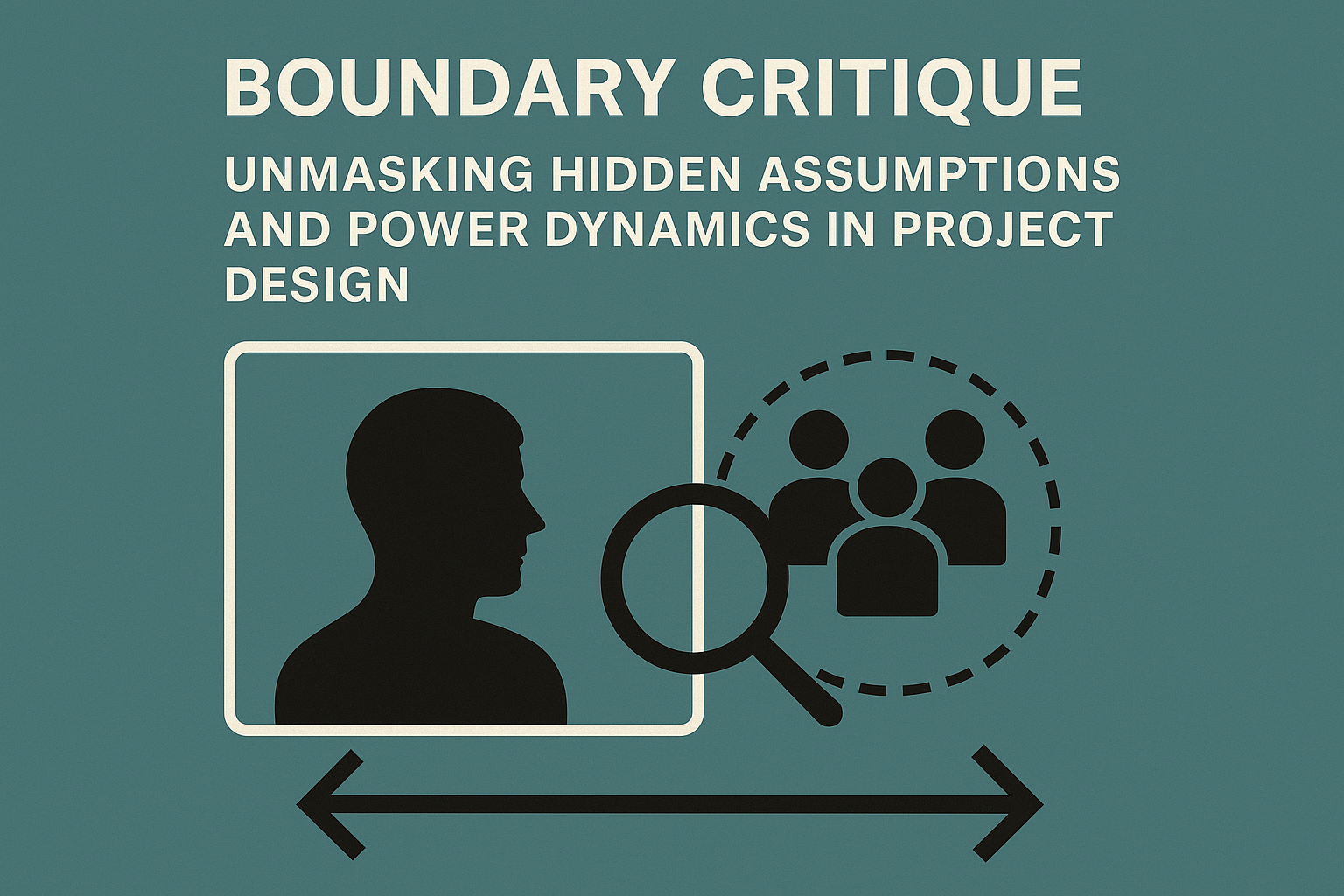Most people are trained to think in straight lines. We believe that when something happens, it must have a single cause and a simple solution. Sales go down, so we run more ads. A student fails a test, so we tell them to study harder. A city faces traffic jams, so we build more roads.
At first, these actions make sense. But over time, they often fail or even make things worse. Why? Because the world rarely works in a straight line. Every action feeds back into the system and changes the very conditions that produced it. This is where feedback loops come in.
Thinking beyond linear cause and effect helps us uncover the hidden forces shaping long-term outcomes.
What Are Feedback Loops?
A feedback loop is when the output of a system becomes one of its inputs, creating a circular chain of cause and effect.
There are two main types:
-
Reinforcing (Positive) Loops: These amplify change. For example, when customers post good reviews, sales rise, leading to even more customers and more reviews. The loop strengthens itself.
-
Balancing (Negative) Loops: These seek stability. Imagine your body temperature. When it rises, you sweat to cool down. When it falls, you shiver to warm up. This feedback keeps your body in balance.
Feedback loops exist in nature, businesses, families, and personal habits. Recognizing them allows us to see the system’s invisible threads that connect cause and effect over time.
System Dynamics – Seeing Patterns, Not Events
System Dynamics (SD) is a discipline that studies how systems change over time through feedback, delays, and accumulations. Instead of asking “What happened?”, it asks “Why did this pattern emerge?”
For example, imagine a company where sales rise and fall every quarter. A linear thinker might look for short-term reasons such as promotions, prices, or new competitors. But a systems thinker searches for the feedback loops that connect staff morale, workload, and customer satisfaction.
This shift from isolated events to dynamic patterns is the essence of System Dynamics. It helps us understand not just what’s happening, but why it keeps happening.
Causal Loop Diagrams (CLDs) – The Language of Systems
To make feedback visible, systems thinkers use Causal Loop Diagrams (CLDs).
A CLD shows how variables in a system affect each other through arrows that represent causation. Each arrow is marked as “+” (moves in the same direction) or “–” (moves in the opposite direction). When these arrows form a closed circle, you’ve found a feedback loop.
For example:
-
A Reinforcing loop might show how motivation increases learning, which boosts performance, which raises motivation again.
-
A Balancing loop could show how higher profits attract competition, lowering prices and restoring balance.
CLDs reveal what linear graphs can’t: the hidden structure behind visible events. They also highlight delays, the time gaps between cause and effect, that often create confusion or unintended results.
Diagnosing Hidden System Drivers
When we map feedback loops, we start to see hidden system drivers, the deeper patterns that create recurring problems.
Take workplace burnout as an example. A manager might think burnout is caused by long hours. But mapping the system might show this:
-
Long hours increase stress.
-
Stress lowers performance.
-
Low performance causes management to push for more hours.
-
Which leads back to more stress.
This is a reinforcing loop, a vicious cycle that keeps feeding itself. Without understanding the feedback, adding “quick fixes” like bonuses or weekend work will only make things worse.
System mapping helps identify leverage points, the small areas where a change can break a loop or strengthen a healthy one. In this example, improving workload balance or employee support might transform the system entirely.
From Events to Dynamics – The Mindset Shift
Moving beyond event-based thinking requires patience and curiosity. Instead of reacting to single problems, we start asking:
-
What pattern keeps repeating?
-
What feedback loops might be creating it?
-
Where are the delays or unseen connections?
This mindset shift is powerful. It changes leaders from firefighters, who react to problems, into system designers, who build structures that sustain long-term health and learning.
Conclusion – Thinking Beyond the Obvious
Linear thinking sees symptoms. Systems thinking sees causes.
By using feedback loops and causal loop diagrams, we uncover the structures driving behavior. These insights help us design smarter policies, stronger organizations, and more sustainable solutions.
When we stop chasing events and start understanding dynamics, we begin to see how everything connects, and that’s when real change begins.



